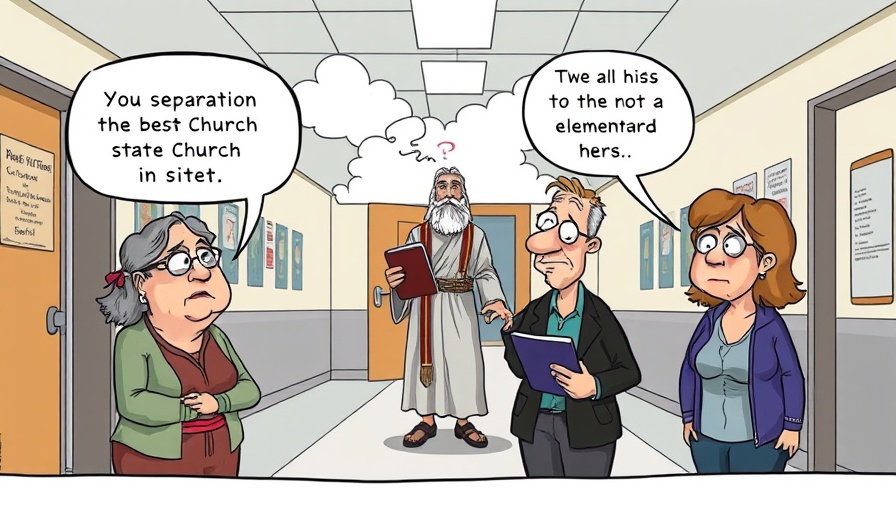
The Evolving Landscape of Religion in Texas Schools
In the heart of Texas, a contentious shift is shaping the educational landscape as discussions about the role of religion in schools intensify. The traditionally secular nature of public education is being challenged, with calls from various groups pushing for increased religious presence in the classroom. This movement reflects broader societal debates about the boundaries between church and state, raising questions that impact everything from educational policies to community values.
Historical Context: Education and Religion in Texas
The intertwining of religion and education in Texas isn't a new phenomenon. Historically, many schools, especially in rural areas, have included religious teachings as part of their curriculum. However, landmark Supreme Court decisions, such as Engel v. Vitale in 1962, laid down clear boundaries, emphasizing that public schools must remain neutral in matters of religion. Despite this, the recent push by some legislators and advocacy groups suggests a renewed interest in re-evaluating these boundaries, highlighting a nostalgic yearning among some for a past where religious guidance was more prevalent in education.
Social Connections: Community Response to the Shifting Paradigm
As debates simmer over the inclusion of religious content in school curricula, communities across Texas are responding with a mix of support and resistance. Business owners and leaders are paying close attention, recognizing that education shapes workforce development and future economic opportunities. Many are concerned that increased religious influence in schools may alienate diverse populations and adversely affect business environments. Texas News coverage often centers on these community reactions, illustrating a broader dialogue on how educational policies can affect local economies and social cohesion.
Future Insights: Predicting the Impact on Education and Business
Looking ahead, the integration of religious teachings into public schooling could yield significant implications for both education and business in Texas. If schools emerge as more religiously oriented, businesses may need to adapt their practices to accommodate a potentially more homogenous workforce. On the other hand, this shift could further polarize communities—an influencing factor that business leaders must navigate to maintain a diverse and innovative workforce. This unpredictability creates a landscape for both opportunities and challenges in Texas's evolving educational environment.
Counterarguments: The Risks of Blending Religion with Education
Not everyone agrees with the trend of introducing more religious elements into schools. Critics argue that this could lead to discrimination against students of different faiths or no faith at all, undermining the core principles of public education. Business owners, particularly those in diverse, urban areas, voice concerns that a religious focus may deter families seeking an inclusive environment. Additionally, the risk of litigation over civil rights violations looms larger as these discussions escalate, creating further challenges for the educational system.
The Bottom Line: Why This Discussion Matters
Understanding the ongoing discussions about religion in Texas schools is crucial for business leaders and community stakeholders. As these debates unfold, the implications for both education and the economy become increasingly intertwined. Leaders must engage in this dialogue to ensure that Texas remains a place where diverse perspectives are welcomed. A poised, informed response to these changes can help shape a more inclusive future, fostering environments where businesses and educational institutions work harmoniously toward shared goals.
As this conversation evolves, remaining informed and engaged is vital. Texas's business leaders have an opportunity to shape the narrative and protect the interests of diverse communities. By advocating for inclusive educational policies, they can help pave the way for a prosperous future that benefits all residents.
 Add Row
Add Row  Add
Add 




Write A Comment